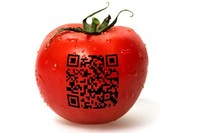 A market research report says that anti-counterfeit packaging for the food and beverage sector will grow16 per cent a year to 2020, thanks to increased use of track-and-trace technologies.
A market research report says that anti-counterfeit packaging for the food and beverage sector will grow16 per cent a year to 2020, thanks to increased use of track-and-trace technologies.
Radiofrequency identification (RFID) and barcode technologies will see strong uptake - particularly in the wines and spirits categories. Holograms, which were the biggest single technology segment in 2014, will continue to play a major role in the next five years says the study by Allied Market Research (AMR).
The full text of the press release appears below:
Anti-counterfeit food packaging market is expected to reach $62.5bn, globally, by 2020
A new report by Allied Market Research, titled, Global Anti-counterfeit Food & Beverage Packaging Market- Industry Analysis, Size, Growth, Trends, Opportunities, and Forecast, 2014-2020, forecasts the market to grow at a CAGR of 16.1 per cent during 2015 - 2020. Holograms segment would enjoy the leading position in overall authentication technology market, through to 2020. RFID technology exhibits fastest growth at 20.4 per cent CAGR during the forecast period.
Every year millions of people are deceived into buying counterfeited food and beverages, posing significant health and safety risks, leading the demand of anti-counterfeit packaging (ACP). Conventional authentication technologies still account for the highest revenue in the global ACP market owing to their economic pricing and ease of application.
The growing adoption of track and trace technologies, such as RFID and Barcode, in premium product segments including wines and spirits, would gain significance over the forecast period. Furthermore, barcode enabled product tracking helps in maintaining the supply chain integrity. Emerging tracking technologies, such as DNATrax, exhibit the highest potential in tracking food products with minimal side effects on human healthr.
Lack of awareness for authentication solutions among local manufacturers and the lack of affordability of high end technologies (RFID technology) would limit the market growth. However, the awareness campaigns organized by anti-counterfeit trade associations, and regular interventions from government authorities would result in increased penetration of anti-counterfeit technologies.
Key finding of the study:
- In 2014, overt holograms held about two-third revenue share in the overall hologram authentication technologies market
- North America will continue to lead the global market due to higher adoption rate and affordability for novel traceable technologies, followed by Europe
- Asia-pacific is projected to be the fastest growing region at an estimated CAGR of 18.1% from 2015 to 2020
- Consumers continue to prefer paper barcode over polyester barcodes
North America accounted for about 50 per cent of the global anti-counterfeit food packaging market in 2014. Increasing counterfeiting practices from European and Asian regions, higher adoption rates of anti-counterfeit technologies, rise in healthcare concerns along with the growing awareness for tracing technologies are largely contributing to growth of the market.
The increasing focus from government authorities towards food crisis management, across middle income population and the rising awareness for authenticated food products are factors that drive the market growth across developing regions. Sicpa and Zebra Technologies are leading players in the global market. Other key manufacturing companies profiled in the report are, Alien Technology Corp., Alpvision, Inksure Technologies, Avery Dennison, Flint Group, and Authentix Inc.
©
SecuringIndustry.com




 A market research report says that anti-counterfeit packaging for the food and beverage sector will grow16 per cent a year to 2020, thanks to increased use of track-and-trace technologies.
A market research report says that anti-counterfeit packaging for the food and beverage sector will grow16 per cent a year to 2020, thanks to increased use of track-and-trace technologies.